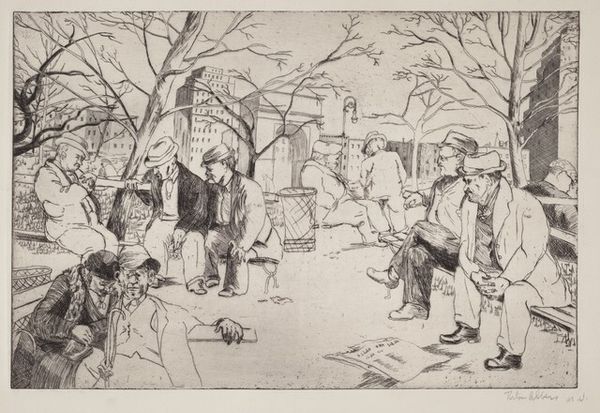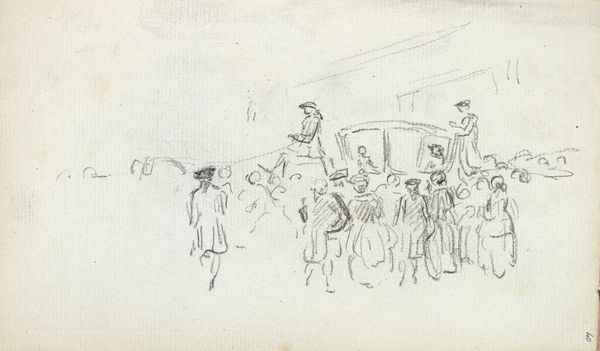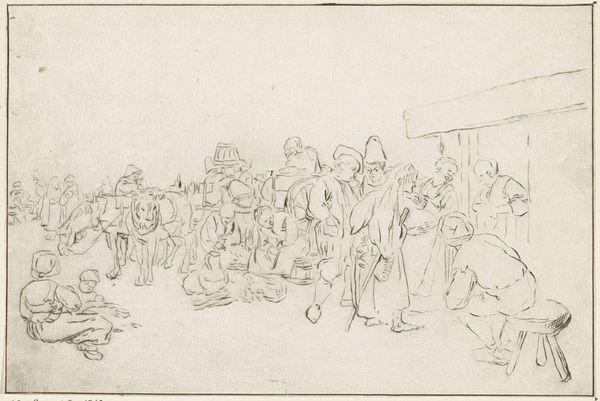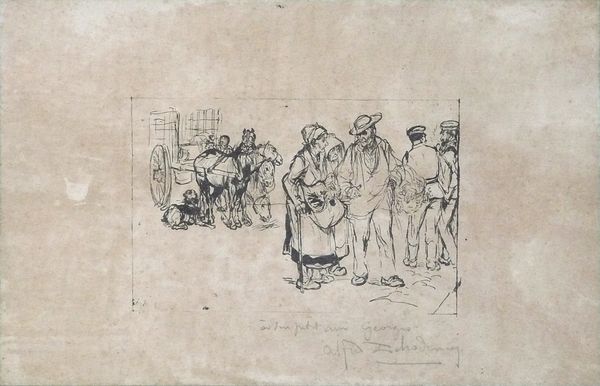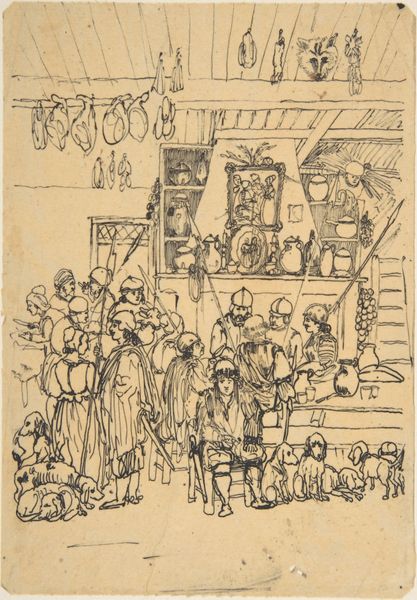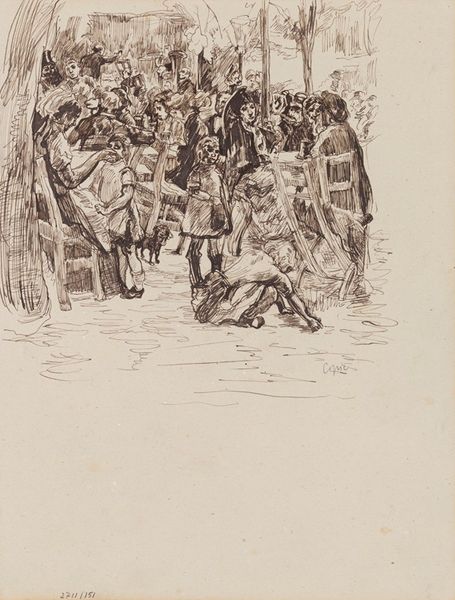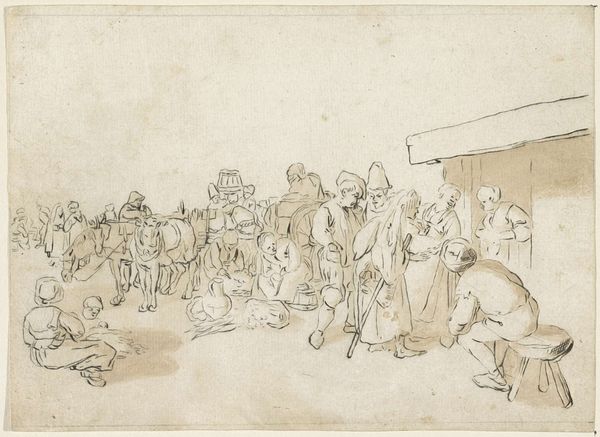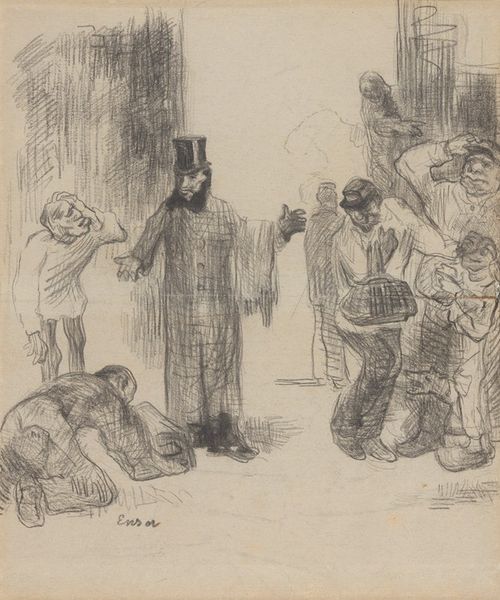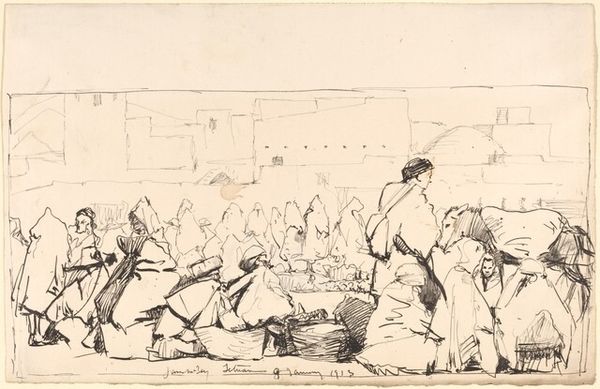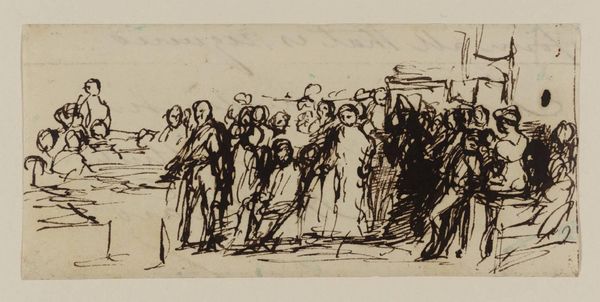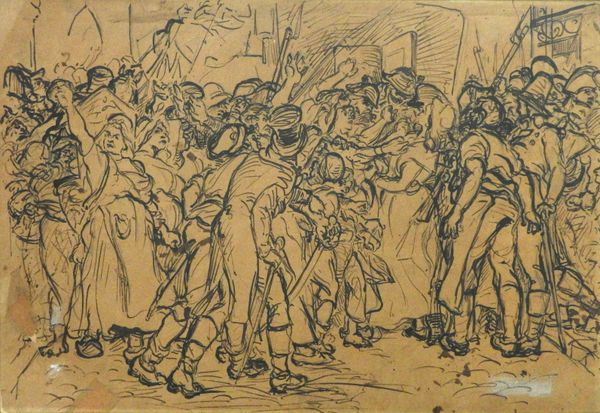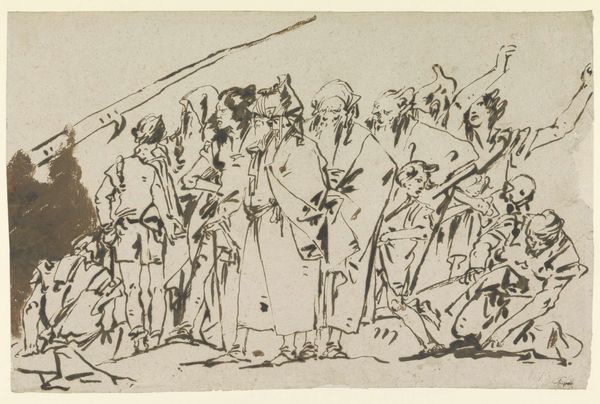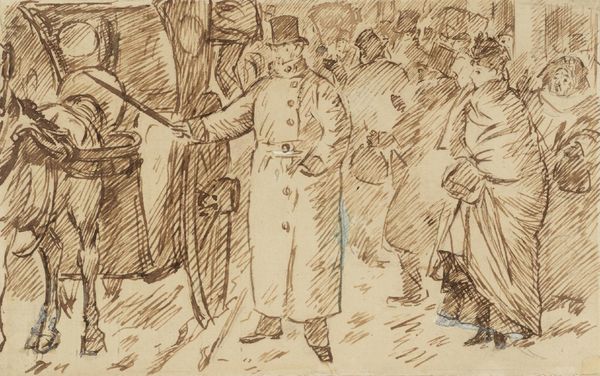
print, etching
#
narrative-art
# print
#
etching
#
figuration
#
cityscape
#
realism
Dimensions: plate: 187 x 277 mm sheet: 249 x 317 mm
Copyright: National Gallery of Art: CC0 1.0
Curator: This etching from 1930 by John August Groth is titled "Bread Liners". What's your initial take? Editor: Stark. Bleak, even. The monochromatic palette underscores the severity of the scene. It’s as if the city's joy has been stripped away, leaving behind only the bare bones of survival. Curator: The image clearly speaks to the economic devastation of the Great Depression, placing a spotlight on the role of poverty and resource scarcity during this period. What can we discern about the figures in line? Editor: They seem to represent a cross-section of the unemployed, predominantly men dressed in the garb of their former lives. Caps and worn coats, their heads bowed—or perhaps raised in muted defiance. Notice the sign reading "Children Refuge" implying social services overwhelmed. The scarcity is palpable and specifically impacting families. Curator: It seems Groth intended to capture the zeitgeist. How does this etching interact with contemporaneous depictions of labor and the social impact of economic downturns in America? Editor: Consider how it reframes the idea of work and worth. Labor movements fought tirelessly for workers rights during industrialization—rights dashed by mass unemployment during the Depression. The dejection is amplified by their forced dependence on charity. The soup kitchen and "Children Refuge" suggest institutional inadequacy during that historical context. The city looming in the background also appears lifeless. Curator: Precisely. This image provides a harsh criticism of systemic failures during an era fraught with socio-political tensions, revealing a reality often marginalized by dominant historical narratives. How might the contemporary viewer engage with this work given current social and economic challenges? Editor: In a world grappling with its own systemic inequities and crises, "Bread Liners" serves as a cautionary, but necessary mirror. The image connects labor rights struggles of the past with issues we currently face regarding job security, access to resources, and social inequality across gender, racial, and socioeconomic lines. It implores us to challenge and reshape existing power structures. Curator: The power of Groth's etching, even almost a century after its creation, is the persistent reminder that art can indeed spur crucial dialogues about identity, resilience, and transformative justice. Editor: It really makes one think about how far, or perhaps how little, we've truly come in addressing systemic inequality. An evocative and necessary piece.
Comments
No comments
Be the first to comment and join the conversation on the ultimate creative platform.
